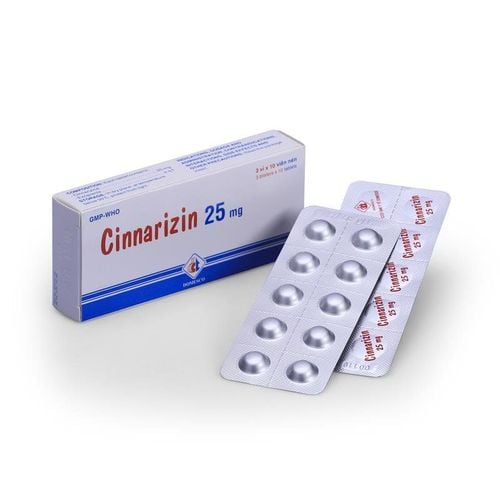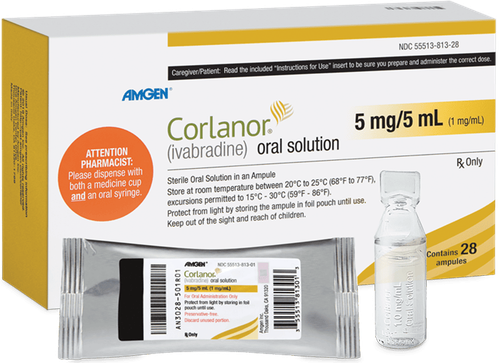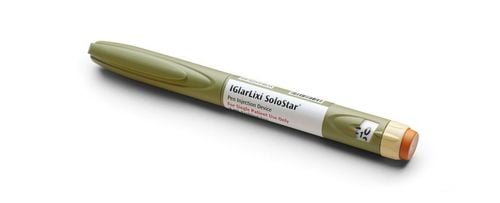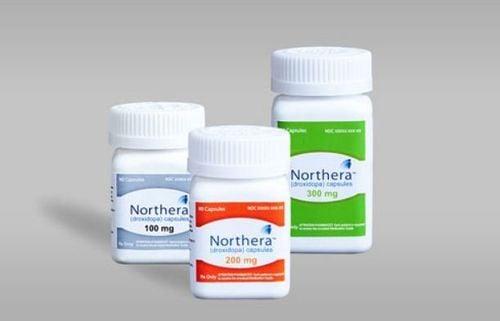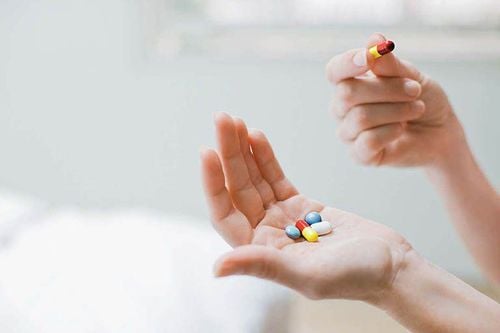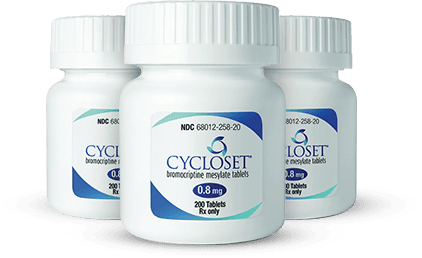This is an automatically translated article.
The article was professionally consulted by Doctor Vo Ha Bang Suong - Department of Medical Examination & Internal Medicine - Vinmec Phu Quoc International General Hospital.Hypoglycemia is a dangerous complication that can occur when diabetic patients are treated with insulin or a sulfonylurea. This is a factor that interferes with glycemic control in patients with diabetes. Hypoglycemia, if not detected in time and treated early, can lead to coma and cause many harms to the patient.
1. What is hypoglycemia?
Hypoglycemia is a condition that occurs when blood sugar levels are too low, below 3.9 mmol/l (<70mg/dl), leading to a lack of glucose in the body for activities, causing disorders for the body. body. Hypoglycemia should be treated quickly and promptly to limit serious complications caused by hypoglycemia.2. Causes of low blood sugar
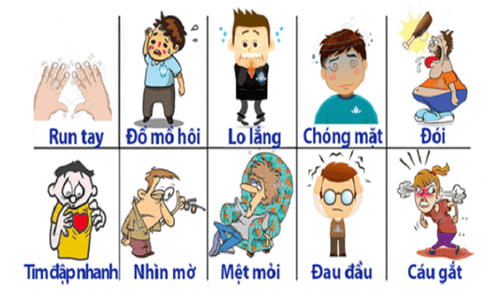
Một số triệu chứng khi bị hạ đường huyết
Insulin-induced hypoglycemia and oral hypoglycemic agents Hypoglycemia is a complication seen in insulin-treated diabetic patients. The absorption of insulin between injections in a patient is very different. Concomitant factors may increase peak plasma concentrations. Relative hyperinsulinemia is also common due to decreased insulin resistance during infection or pregnancy, or due to increased insulin sensitivity (weight loss or excessive exercise). Changing the type of insulin on a patient without a doctor's supervision.
Hypoglycaemia due to oral medications is less common but can occur.
Especially seen in patients who are taking insulin or oral hypoglycemic drugs but reduce the portion size or delay the meal time.
Exercise Patients with type 1 diabetes often experience hypoglycemia during exercise.
Alcohol Alcohol increases the risk of hypoglycemia because alcohol inhibits the production of sugar. In addition, alcohol makes or confuses the warning symptoms of hypoglycemia. People who drink alcohol often do not eat and often go to bed afterwards, so it is difficult to recognize hypoglycemia.
3. Favorable factors of hypoglycemia
Patients do not understand or are not adequately instructed: Patients treated for diabetes do not follow instructions, constantly change their diet. Insulin, physical activity, and blood sugar monitoring are common causes of hypoglycemia. Attempts to maintain normal blood glucose levels: One risk factor for hypoglycemia is inappropriate and unrealistic efforts to maintain tight glycemic control or a normal HbA1c level. It can be seen in people trying to be on an excessively secretory diet while still taking insulin. Having diabetes for a long time: Due to neurological and humoral disorders, it is a complication of long-term diabetes. Leads to loss of warning signs of hypoglycemia in the patient. In addition, long-term diabetic patients often have episodes of hypoglycaemia, leading to loss of perception of signs of hypoglycemia. Hypoglycemia without warning symptoms: Patients with type 1 diabetes sometimes go into comas, convulsions without warning signs. The common scenario is that the symptoms and signs of hypoglycemia simply change over time and become unrecognizable. Low blood sugar at night – disease at dawn. History of severe hypoglycemia: The patient has had recurrent episodes of severe hypoglycaemia resulting in: Decreased hormonal response to hypoglycemia. Increased episodes of undetectable hypoglycemia. Renal failure and liver failure.
Xử trí hạ đường huyết
4. Symptoms
4.1. General Symptoms The patient feels sudden unexplained fatigue. Feeling dizzy, headache, anxiety. Feeling of heavy limbs, weakness Pale skin Sweating often on palms, forehead, armpits. Anxiety palpitations, anxiety, panic attacks, loss of composure There is an increase in salivation. The feeling of chills in the body running down the spine Trembling hands. 4.2. Cardiovascular signs Tachycardia May have heaviness in the chest, angina. 4.3. Digestive signs Feeling hungry, burning sensation in the stomach. There may be stomach cramps, epigastric pain. There may be nausea, vomiting. 4.4. Severe neurological signs may cause generalized convulsions or focal epileptic seizures. Focal neurological signs: paralysis of 1⁄2 people, cranial nerve damage, sensory and motor disturbances. Blurred vision, double vision, dizziness. 4.5. Psychiatric signs May present with agitation, personality disorders, gratuitous laughter, hallucinations.
4.6. Hypoglycaemic coma Usually a severe stage of hypoglycemia, which can appear suddenly, without warning signs, but is uncommon. Usually occurs after the symptoms that preceded it, but when it is treated promptly.
5. Diagnosis
Blood sugar < 70mg/dl (3.9mmol/l). In case of suspected hypoglycemia, do not wait for test results, but try treatment with glucose 20%, 30% or glucagon. If the patient is awake, the diagnosis is confirmed.
6. Emergency management of hypoglycemia and treatment
6.1. Treatment of emergency hypoglycemia at home With sudden hypoglycemia situations, the patient himself and his relatives need to quickly identify the hypoglycemia and treat it quickly by: Eat one tablet immediately sweets, a cake or fruit available. If not, need at least 15g of sugar (3 pieces of sugar or 3 teaspoons of sugar mixed in 100ml of water). Severe hypoglycemia also requires the same initial management and then the patient is taken to the hospital for advanced emergency management.
6.2. Treatment With hypoglycemia situations in the hospital, it should be handled by:
Stopping the hypoglycemic drugs or insulin being used In case of mild hypoglycemia, the patient is awake: Instruct the patient to eat one tablet immediately candy, or pieces of cake, fruit are available. If it doesn't help, give the patient a glass of soft drink or sugar water. In case of severe hypoglycemia: Glucose infusion in case of severe hypoglycemia, unconscious consciousness, patient unable to eat or drink by mouth Intravenous injection of 20-50ml of glucose 30%, may repeat if the patient is ill. Unconscious patient Following infusion of Glucose 5% (or Glucose 10%) to maintain blood glucose > 5.6 mmol/l Glucagon 1mg (IM or subcutaneous injection): indicated for patients with severe hypoglycemia, unable to ability to eat by mouth or patients who cannot place an intravenous line immediately in emergency. Patient awake: Give drink or eat extra meals, check blood sugar every 4 hours to avoid too high blood sugar Long-term coma due to Late emergency or due to complications such as cerebral edema, cerebrovascular accident Maintain blood sugar with glucose 10% Against cerebral edema.
7. Prevention of hypoglycemia
People with diabetes and their loved ones need to be educated on the detection and treatment of hypoglycemia at home.When thinking about hypoglycemia, the patient must do the following things immediately:
Eat a meal immediately, drink fruit juice or sugar water Immediately notify your doctor or nurse treating your illness Check and bring some a piece of sugar when leaving the house Inform your diabetes to friends, colleagues, relatives Must check blood sugar if you feel unappetizing, eat less than usual, or exercise too much Limit drinking alcohol, especially drinking alcohol without eating or eating less For women note the dates of their menstrual cycle Always carry a diabetes card, your doctor's phone number, the phone number of a loved one by my side
Please dial HOTLINE for more information or register for an appointment HERE. Download MyVinmec app to make appointments faster and to manage your bookings easily.




